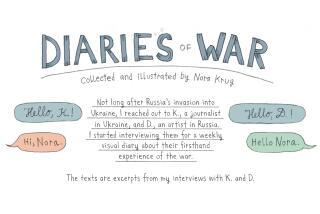Book review: ‘On the Road to Babadag’ by Andrzej Stasiuk
- Share via
The best travel books, like “On the Road to Babadag,” are read for more than the mere travel information they supply: They give readers the true experience of going there. Setting out from his tiny village of Czarny near the Polish-Slovakian border, writer Andrzej Stasiuk heads for that place where Ukraine, Romania, Slovakia and Hungary come together — it’s not exactly what comes to mind when we say that somebody’s gone traveling in Europe. From there, he goes on to the farther reaches of an obscure Europe and, eventually, the coast of Romania, where the Danube dissipates into the Black Sea near the town of Babadag.
Stasiuk, a prolific and frequently translated Polish writer with six other books in English, is a patient traveler who notices everything. “Sometimes in the dark,” he writes, “you saw sparks from a horseshoe.” As Whitman was Kerouac’s shade in “On the Road” (and of course you can hear Kerouac echoed in this book’s title), so the great Romanian thinker E.M. Cioran (whose books include “A Short History of Decay”) is Stasiuk’s welcome literary ghost. When he travels to Cioran’s native village, Stasiuk notices everything, including the smells, “the soil between the cobblestones…wisps of the stable from innumerable harnesses; from the fields came the choking air of pastures, from the gutters the cesspool seep of barns and sties; and one day in the river I saw entrails floating.”
Hard stuff, but the genius of Stasiuk is that he also provides the necessary contrasting quote from Cioran:” It would have been better for me had I never left this village. I’ll never forget the day my parents put me on the cart and took me to the lyceum in town. That was the end of my beautiful dream, the destruction of my world.” These contrasts create layers of context for an experience unfamiliar to most readers.
Of course the reader of this book is entering a world in which all recognizable landmarks are gone, a place where “for us everything starts or ends with a war.” It is a place where work is still real, a place where one feels “the enormity and continuity of the world.” A place where “between two rows of houses moved a herd of sated cattle. They were accompanied by women in kerchiefs and worn boots or by children. No isolated island of industrialization, no sleepless metropolis, no spiderweb of roads and railroad lines could block out this image as old as the world. The human joined with the bestial to wait out the night together.”
Stasiuk takes us to real places; on the Day of the Dead, for example, he stops and lights candles in a war cemetery, reminding us that “the roots of these trees have been feeding for more than seventy years on the bodies of Estonians and Croats, in a corner of the world no one visits.”
McGonigle is the author of several books, including “Going to Patchogue.”
More to Read
The biggest entertainment stories
Get our big stories about Hollywood, film, television, music, arts, culture and more right in your inbox as soon as they publish.
You may occasionally receive promotional content from the Los Angeles Times.










